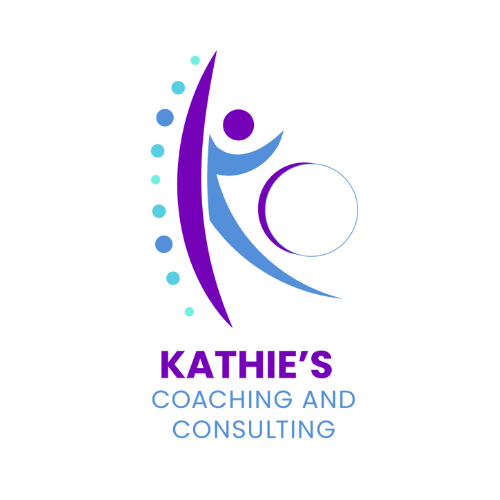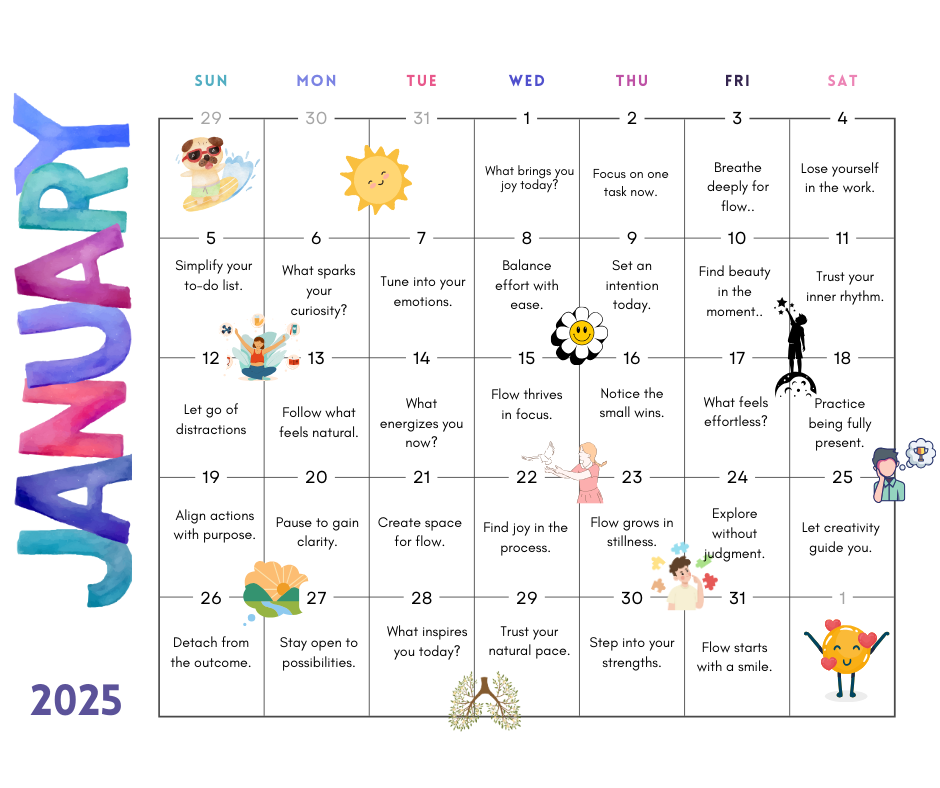Why 87% of Employees Never Experience True Flow (And What's Blocking Them)
What is Flow?
What is Flow, and Why Does It Matter in the Workplace?
Flow is the magical zone where challenge and skill intersect. When tasks are perfectly balanced—not too easy to be boring and not too hard to be overwhelming—flow emerges. It’s the sweet spot where employees are deeply immersed, fully focused, and performing at their best. In the workplace, flow isn’t just a productivity booster; it’s a powerful driver of innovation, engagement, and morale. Learn how a corporate wellness consultant can help your team engagement.
Picture a graphic designer creating a campaign that stretches their creativity just enough to be exciting. Or a project manager navigating complex timelines with tools they’ve mastered over time. This is flow in action—a harmony of challenge and skill that keeps work fulfilling and energizing.
The challenge? Flow doesn’t happen automatically. It requires cultivating the right skills and overcoming obstacles that often disrupt this state. That’s where the power of habits comes into play.
Watch today’s episode on YouTube or Listen on Kathie’s Coaching Podcast
Flow and The River
Metaphor: The River of Work
Imagine a river flowing effortlessly through a landscape. When the river is in harmony—neither blocked by debris nor rushing uncontrollably—it moves with grace, providing life and energy to everything it touches. This is the flow state at work.
In this metaphor:
The River represents the tasks and challenges of your job.
The Current is your skillset, propelling you forward with just the right speed and intensity.
The Banks are the boundaries and structure that guide your focus and prevent distractions.
When the river flows smoothly, it’s productive and purposeful, carving its way through obstacles with persistence and creating a thriving environment. However, if the river dries up (tasks are too easy or mundane), stagnation sets in. If it floods (tasks are overwhelming), chaos ensues.
Staying in the River of Flow
The Benefits of Staying in the River of Flow
Energy Source: Flow fuels creativity and motivation, just as the river nourishes the landscape.
Clear Path Forward: Like a river, flow cuts through challenges with focus and precision, leading to progress.
Balanced Momentum: With the right balance of challenge and skill, flow ensures steady, sustainable productivity.
Collaborative Strength: Just as rivers connect communities, flow enhances teamwork, communication, and collaboration.
By cultivating habits that remove blockages (distractions) and build skills to navigate rapids (challenges), your team can ride the River of Work with ease, transforming the workplace into a thriving ecosystem of engagement and success.
Challenge Meets Skill
Building Habits: Skills Meet Challenges
Habits form the backbone of workplace flow. However, not all habits are created equal. The most effective ones are built around skills that help employees tackle challenges and rise to meet their full potential. These habits don’t just make work easier; they turn obstacles into opportunities for growth.
Here are the three foundational skills for building habits that drive flow:
Focus
In a world full of distractions, the ability to focus is a superpower. Habits that strengthen focus help employees dive into tasks without the constant pull of interruptions.
Adaptability
Challenges are inevitable, but adaptability ensures employees can adjust and thrive in dynamic situations. Building habits around flexibility helps teams tackle change with confidence.
Resilience
Flow isn’t a straight path; setbacks are part of the journey. Habits that nurture resilience empower employees to recover quickly, turning failures into valuable lessons.
Great books on habits that I mentioned in today’s episode:
Skill Driven Habits
Skill-Driven Habits: Turning Challenges into Wins
Flow thrives when challenges are met with the right level of skill. Here’s how to use habit-building to enhance focus, adaptability, and resilience while celebrating every small victory along the way.
1. Focus: Building Clarity and Momentum
Daily Intention Setting: At the start of each day, have your team write down one key task to complete. This habit sharpens focus and sets clear priorities.
The Two-Minute Rule: Encourage employees to start tasks by committing just two minutes. This micro-habit makes overwhelming challenges feel manageable, often leading to extended focus sessions.
Distraction-Free Zones: Implement team-wide "focus hours" where notifications are muted, and everyone works on deep tasks. The collective effort amplifies flow.
Win: Completing small, focused tasks gives employees a sense of accomplishment, boosting confidence and motivation.
2. Adaptability: Thriving in Change
The 5-Minute Pivot: Teach employees to spend five minutes brainstorming alternative solutions when faced with a roadblock. This habit turns frustration into creativity.
Flexible Planning: Incorporate buffer time into project timelines to account for unexpected challenges. Teams that practice this habit feel less stressed when plans shift.
Learn from the Unexpected: End meetings with a quick reflection: "What went differently than expected, and what did we learn?" This builds adaptability into everyday work.
Win: Overcoming unexpected challenges fosters a growth mindset and strengthens problem-solving skills.
3. Resilience: Bouncing Back Stronger
Celebrate Small Wins: Recognize progress, no matter how small. Whether it’s completing a difficult task or finding a solution, acknowledging achievements builds momentum.
Debrief with Purpose: After setbacks, hold brief discussions to identify what went wrong, what went right, and what can be improved. This habit turns failure into learning opportunities.
Mindful Breaks: Encourage employees to take short, mindful breaks during stressful moments. Even five minutes of deep breathing or a quick walk can recharge their energy.
Win: Building resilience through reflection and recovery helps teams stay motivated and learn from challenges.
Workplace Habits
Practical Workplace Habits That Promote Flow
Here are some examples of habits that align skill and challenge to foster flow:
1. Individual Habits
Task Chunking: Break large projects into smaller, manageable steps to reduce overwhelm and increase focus.
Learning Sprints: Dedicate 15 minutes a day to building a new skill related to work. For instance, learning a new software shortcut or brushing up on industry trends.
2. Team Habits
Collaborative Brainstorming: Schedule regular sessions to tackle complex challenges as a group. The diversity of skills enhances problem-solving.
Skill Sharing: Pair team members with complementary strengths to learn from each other. For example, a tech-savvy employee can teach new software while a great communicator offers public speaking tips.
3. Leadership Habits
Challenge Calibration: Regularly assess if tasks are too easy or too hard for employees. Adjust workloads to ensure the right balance of challenge and skill.
Transparent Feedback: Create a culture where feedback is open, constructive, and actionable. Employees who know where they stand can align their efforts with company goals.
From Challenge to Achievement
From Challenge to Achievement: The Flow Formula in Action
Here’s a step-by-step approach to help your team embrace challenges, develop skills, and build habits that foster flow:
Assess the Challenge-Skill Balance
Identify tasks that feel too easy or too overwhelming for your team. These are prime areas for adjusting workflows or introducing new habits.
Select a Focus Area
Choose one foundational skill—focus, adaptability, or resilience—and introduce habits that build it.
Start Small and Simple
Focus on micro-habits that are easy to implement. For example, encourage employees to block 15 minutes each morning for uninterrupted work.
Celebrate Wins
Highlight progress regularly. Share success stories in meetings or create a "win wall" to showcase achievements.
Iterate and Improve
Evaluate which habits are working and refine those that aren’t. Building flow is an ongoing process, not a one-time fix.
Flow State is Worth the Effort
Why Flow is Worth the Effort
When employees consistently operate in a state of flow, the workplace transforms. Challenges become opportunities, skills evolve, and teams grow stronger together. By focusing on habits that align challenge and skill, you’re not just improving productivity—you’re creating a culture of engagement, resilience, and achievement.
Building habits is about more than getting things done; it’s about empowering your team to thrive. With every challenge overcome, they’re one step closer to mastering the flow formula.
What challenge is your team tackling today, and what habits will help them overcome it?
#FlowInWorkplace #EmployeeEngagement #HabitsThatStick #ChallengeAndSkill #CorporateWellness
Follow Kathie on Social Media
About Kathie
Kathie Owen is a corporate wellness consultant, coach, and founder of Top Workplace Wellness, dedicated to creating thriving workplace cultures through engagement, health, and mindfulness.
Kathie Owen, Corporate Wellness Consultant and Coach
With over 20 years of experience in fitness, wellness, and leadership, Kathie empowers teams and leaders to align challenge with skill, fostering flow and productivity.
Known for her holistic approach, she combines cutting-edge strategies with a passion for helping others build habits that stick, ensuring employees feel valued, energized, and engaged.
Whether through workshops, consulting, or her engaging content, Kathie is on a mission to end burnout, boost morale, and transform workplaces into spaces of innovation and growth. Learn more about our story: www.kathieowen.com/our-story.
Read More Articles from Kathie Here
Transcript for this episode:
Hello and welcome. Today, we're going to talk about flow state and how it can help your team's productivity and yourself as well. What if I told you that 87% of employees never experienced, true flow state. Man, I feel sorry for them. They're actually missing out on their peak performance. Welcome to Kathie's coaching podcast. I'm your host Kathie Owen I want you to picture your favorite athlete, you know, the one that always makes those shots despite being booed or despite all of the stress that's on them. Or even the ones that miss it. But they still find flow state. They happen to understand flow state. They epitomize flow state. They're actually someone I look to when I'm trying to understand flow in my life or understand flow when I'm teaching somebody, how to. I get into the zone, which is flow by the way. They have managed to enter flow state, which is where challenge meets skill. They know they have the skill and they also can find the challenge. And when the challenge meets the skill they are in flow state, this is why. That great basketball player can make that free-throw despite being booed incessantly, despite all of those little things in the background, cheering and trying to distract them. They still hit it. And even when they don't, they don't beat themselves up about it. So. Flow can help your team. Become more productive at work. And that's what we're going to talk about today. And that includes you as well. Flow state is a wonderful, wonderful state. It was coined by the term. By the psychologist, Mihai cheek semi high. He wrote the book flow. I'll have a picture of it right here. And then I'll also have a link to it. In the blog post that I include in every video I do in the show notes and description below. That has a bonus resources for today. Flow state is that perfect balance between challenge and skill. And there's three areas we're going to cover today that your team could benefit from, or you yourself could benefit from. And those three areas are focus, adaptability and resilience. I want you to think of a river for a moment. You know, the river flows, it's got the banks, it's got current, it comes over rocks. It, it is the greatest metaphor you can think of for flow state. The current that goes on inside the river can represent your skills. The banks on the sides of the river can represent your structure or your boundaries. And then imagine the river being blocked. You know, they call it a damn. And when it is blocked, what happens? Things spill out on this side. And things become overwhelming. It goes over the dam. That's been blocked the river. And we're going to talk about how all of this relates to your team's productivity or your productivity as well. First of all, we have focus. You want to build a distraction free zone where you can actually get focused. In today's world distractions are coming everywhere. We always have things that are distracting us. But when you set a boundary. You know, the banks of the river. When you set a boundary for your distractions, you're able to focus and focus is a key component of flow. Then we have adaptability. There's something I called the five minute pivot technique. And this technique is helpful because you're going to have to pivot and move between the currents and that takes your skill as well. But we want to use our skill to our advantage. And we could do that by taking this five minute pivot technique and that technique. Just entails sitting down and go, okay. I've hit a block in my skill or something has happened. I'm going to do five minutes to go brainstorm a new idea. Take five minutes to step away for a minute. For example, I used to have a lot of struggles with recording my videos, my computer was messed up and so my videos would get stuck and things were messed up. And that to me was a sign that I needed to step away because I had met a challenge that didn't meet my skill. So I adapted by pivoting and I would just step away. Maybe for a day and that timeframe would help me. Pivot back into flow state instead of becoming a flow breaker a distraction it helped me readjust and adjust my skills accordingly to meet the challenge. And then there's resilience. We want to learn from setbacks. We want to learn from those instances where we lost the game. But if we look at it like this, we can celebrate the small wins and still have flow in our life. I'll go back to the example of the teams. You have so many teams in a league and only one of them is going to win the whole championship. And that means there's a lot of losers. No. That means there's a lot of small wins along the way for everyone across the board. When my son was in little league baseball, I would get so frustrated because parents would cheer for somebody who messed up. And these are just little kids. And I know that builds resilience, but at the same time, I couldn't cheer for the kid who was messing up because I'm like, I'm a mom. That kid has a mom. And I can only imagine how she feels right now. And I'm not going to cheer for that mistake, even though my son may have made that hit, it was still a mistake on somebody else's part. You celebrate your small wins that go along the way. So that, that doesn't seem so bad. You hear me talk about habits a lot habits are really, really helpful in building a flow state. And here's why habits become unconscious behaviors. Think about it. When you drive your car, do you think about every little step you took? No. It, because if you did, it would take too much energy from your brain. So when you start to create habits, do tiny habits. I do the power of habit. Those are books by the way that I will link in the blog post that goes with this episode. But when you think about building habits, when you build them slowly, but surely you unconsciously start to build the habit of finding flow. Let's talk about that. So individual habits can look like this. You do task chunking. For example, right now I am recording videos in chunks so that I can do all of the video recording tasks at one time, then I'll go into. Editing tasks that is task chunking. When you think of a project, if you break it down into different tasks, it makes it easier and it makes flow come naturally. That becomes a habit. Another great individual habit is called learning sprints. What is that? That means you are learning different things, and then you go practice that skill. And learning that could be as simple as listening to a book while you're in the gym. And then you think, oh, I'm going to go practice those tasks because success doesn't just happen overnight. It's built on these task chunks and learning sprints. Team habits can look like this, you know, working in a collaboration on something, or even sharing some skills that you've learned along the way that you can help others to develop on and even get better all the time. It works like magic. And leadership habits. I'm going to be talking about professional football and some of my favorite coaches coming up in some future episodes about how they built a culture that you could practice the same habits that they have, that they work on, that they do inside your business, that will help build the culture that is a successful team. What do I mean by that? This. Is a leadership habit. You constantly want to be learning how to improve your leadership skills. This should never end. It's an infinite game. We're constantly improving or constantly getting better. We're constantly hitting. Opportunities, which are setbacks. But we still see the opportunities where we can help get better over time where we can help find flow state. And that could be a challenge calibration. And then we also want to have the feedback loops. One of the most important things that I do as a corporate wellness consultant. Is assess a team. You constantly want to understand where you have opportunities, which could be looked as, as setbacks, but you have opportunities for improvement for helping your team find more flow to help your leadership skills get better. Um, there we go again. There's that word? Skill. Challenge meets skill. And when we find that sweet spot, we start to find flow and we start to get better and better and better. That is a feedback loop that you get from your assessment. So you have that loop that just keeps going on and on and on, and it's never ending. And I invite you to look at places where you could give yourself feedback and that loop and continue to improve on a regular basis. Again, it's an infinite game So here's some implementation steps that you could start taking today. Number one start assessing the challenge and skill balance. Where's the challenge and where is the skill? This can go with yourself as well. So for example, I was talking about how I would have trouble with my video editing. It was my computer, but I wasn't at the skill level. I needed to edit my videos. So I needed to balance that out. How did I do that? I stepped away for a little while. I stepped away for a couple of days. I start studying it and learned to improve my skills on editing and getting better at recording the content. And. Next thing. I know I'm in flow. It was a balance. And it started with assessing my skills. Another thing you can do is just choose one area to focus on. What is that area, maybe you need to improve on your leadership skills and study that, and slowly but surely build that skill, just like the athlete. They have to study where their skill is not meeting their level. A free throw shooter in basketball. Maybe he sees in this game. I did not hit the shots that I usually hit. So he started practicing it. And when he practiced it, he got better and better with time. Another way you could start implementing it is implement micro habits. Tiny habits. I love the book tiny habits, because what he does is he teaches you how to start building healthy habits. On top of the habits that you already have going on. So, if you're already brushing your teeth in the morning, you could add, listen to my affirmations at the same time. Repeat my affirmations in my mind at the same time as I'm brushing my teeth. And then it becomes a habit. That's a micro habit stacked on top of another micro habit, which becomes a healthy habit. And remember habits are unconscious behaviors that we do automatically. So they are already a wonderful way to improve your skills. And then we'll finally, we want to track. And celebrate those wins. Celebrate small wins. I can't tell you how impactful this is. So a small win. I could be just getting up there and doing something you've been trying to do, even if it's just a hobby you've been trying to build on that habit, or you actually did the habit of. Whatever it was when you were brushing your teeth, celebrate that small win. Yay. Go Team! So. After listening to this, I want you to start to think of flow breakers in your life. And how you react to them. And remember we all get up. Are you very, very reactive and very angry, or do you look at it as an opportunity to get better? That goes the same for your team. And as a leader, if you can teach this and coach this, just imagine how much better your team is going to get when you start to help them find flow because remember I started this with 87% of employees are not practicing this simple process that could help them become more productive and more successful. As always. And every episode I do, I include a blog post. It will be in the show notes and description below. And this. Article we'll have bonus resources that go along with this episode. Like the books I talked about today. Or just simple tips that I didn't even happen to mention in here that may really trigger you into finding your flow state. And I also invite you to share the comments below, maybe your win for finding flow or something that you found was helpful to finding flow state. All right. That's my video for today. I trust that you found it helpful. If you know somebody who could benefit from this, please share it with them. And until next time I will see you next time. Peace out and Namaste



















Explore the transformative power of self-persuasion through Neville Goddard's teachings, biblical wisdom, and a classic hymn. Learn how imagination shapes reality, faith precedes evidence, and inner conviction creates outer change. Practical tips for daily self-persuasion and spiritual growth. #SpiritualGrowth #Manifestation #NevilleGoddard #FaithJourney #PersonalDevelopment